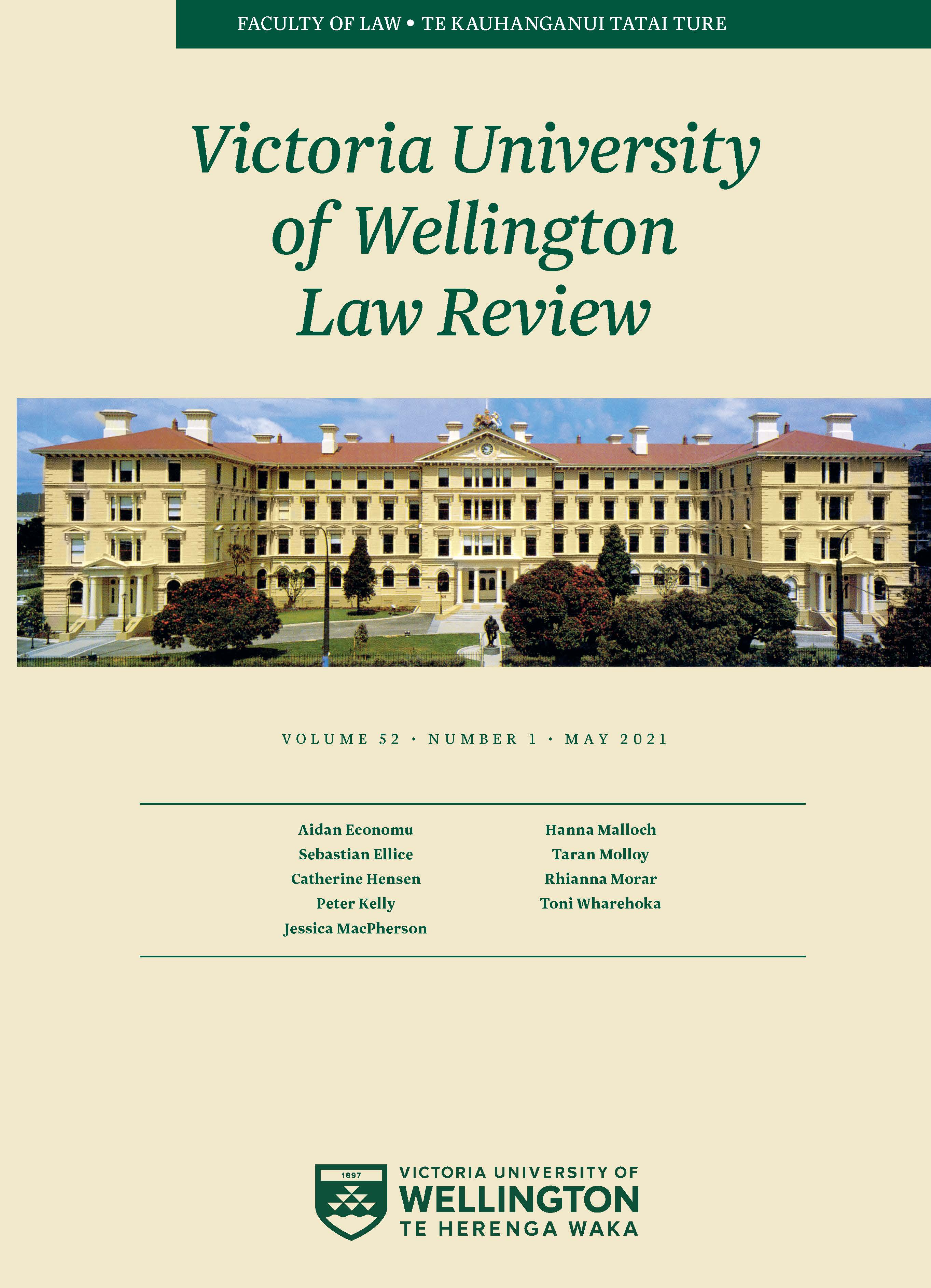Fearn v Board of Trustees of the Tate Gallery: A Lost Opportunity for the UK's Protection of Physical Privacy
DOI:
https://doi.org/10.26686/vuwlr.v52i1.6840Abstract
The inadequacies of English common and statutory law have left a noticeable gap in the UK's protection of physical privacy. Mann J's 2019 decision in Fearn v Board of Trustees of the Tate Gallery helped fill this gap as it acknowledged that overlooking between neighbours could constitute an actionable nuisance. A year later, the Court of Appeal reversed this development and reaffirmed that private nuisance cannot be used to combat breaches of privacy. This article evaluates the extent to which the High Court decision in Fearn was a useful and desirable tool for defending physical privacy in order to assess the correctness of the appellate decision. The article contends that Mann J's extension was a justified development as it conformed with precedent, the scheme and principles of private nuisance, the text and horizontal effect of art 8 of the Convention for the Protection of Human Rights and Fundamental Freedoms, cases decided in the European Court of Human Rights, and broader policy. However, the article acknowledges that Fearn was also a problematic development with limited potential as a protection mechanism. Its limitations arose from the conflict between traditional understandings of the right to privacy and nuisance's association with property, the land-based rationale for compensation in nuisance, the standing restrictions retained from Hunter v Canary Wharf Ltd, irregularities with the common law's favourable attitude towards children's privacy, and Fearn's similarities to anti-harassment legislation. Overall, the article concludes that although Fearn was imperfect in its treatment of physical privacy, it was a step in the right direction and contributed at least partially to filling the persistent lacuna in English privacy law.
Downloads
Downloads
Published
How to Cite
Issue
Section
License
Authors retain copyright in their work published in the Victoria University of Wellington Law Review.


